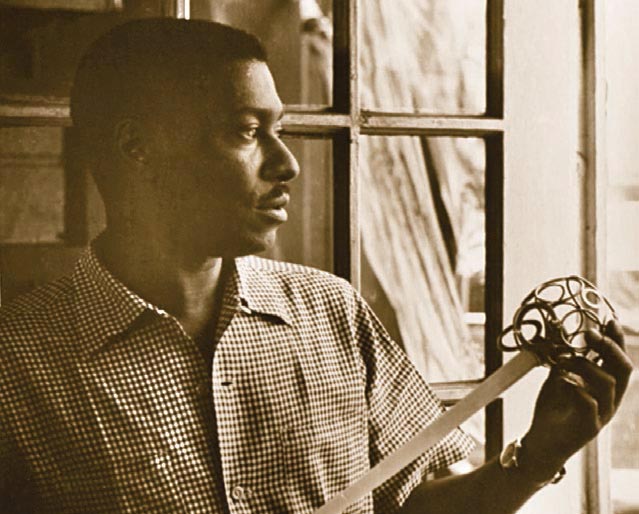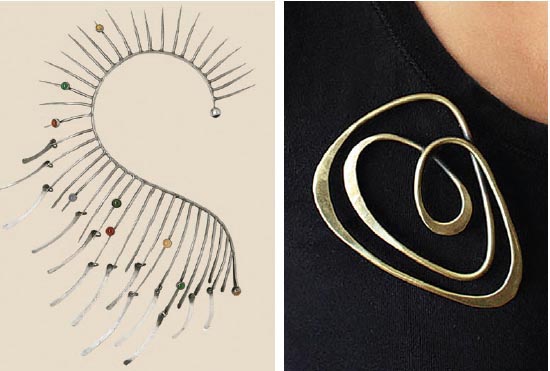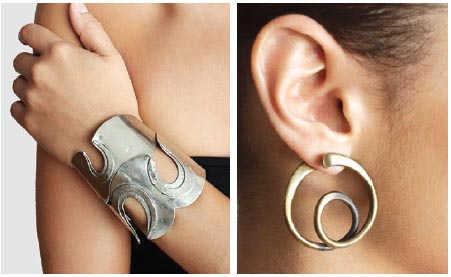Caressing Spirit - Page 2
 |
|
|
Smith was wonderfully funny, breaking into spontaneous dances, and often clicking his tongue like castanets to make "cha-cha-cha sounds," Russell wrote, especially when in the company of Latinos.
Civil rights and other social issues were always important to Smith, and he attended rallies and political events. He never held back from expressing his opinions.
Smith's jewelry could be as bold as his personality, and as creative. He could work small, as with rings. But even these were dramatic, suggesting brass knuckles at times, though in a good way.
"I think about the fingers," Smith said in the 1971 interview. "What can I do in and around the finger, not just on the finger? A ring can go around the finger. It can go up a finger, down a finger, across the finger."
One ring—with semi-precious stones, apparently floating above the knuckles—he describes as "just as if a sticky hand went into a pot of stones and came out with a variety of stones clinging to the various fingers and in between the fingers."
 |
 |
|
|
Smith is best known, though, for some of his larger pieces. His 'Diminishing Spirals,' a series of increasingly large linked spirals, is big enough to fill the chest of a tall man, like a breastplate. And like many of his pieces, it was designed as kinetic art.
"The jewelry was dynamic, sculptural," Joanne Hyppolite, a curator at the Smithsonian National Museum of African American History and Culture, said on a PBS 'Craft in America' episode. "It had so much mobility to it. He was a jazz aficionado. And the way that the jewelry moves and swings and swerves is so similar to jazz."
"The mid-century modernist jewelry movement was a period of time in which artists were turning to a jewelry as a form of art," Hyppolite said. "Art Smith is recognized as a significant maker in this movement. Mid-century modern jewelers were creating something that was new and amazing. And that was art, wearable art. They were really moving away from the idea of mass-produced objects and focusing more on the person who creates the work."
Surrealism was an influence and so was African art. There's a bit of Art Nouveau swirl, too.
 |
Smith worked most often in brass and copper, but also in silver, sometimes using an acid bath to create patina. He would twist metal wire to create question-mark-shaped neckpieces, delighted in asymmetry, and created smooth 'biomorphic' forms and even Space-Agey designs he called 'astromorphic.'
Indeed, some of his designs could suggest life forms. Russell described Smith's famous 'Lava Bracelet' as a composition of "freeform metal plates that suggest an oozing semi-solid with a distinct come-hither quality."
Smith's compositions could be complex, even puzzling. His 'Magic Bracelet' seems at first to wrap the wrist with two interlocking bands. But not so. "Customers have been known to ponder this object for several minutes before realizing that it is really only one piece," Russell wrote, made from a single piece of wire.
One amazing piece, 'The Ellington,' used sterling silver, turquoise, and other stones to create a trio of onion-like forms to dangle from its wearer's neck. Jazz pianist Don Shirley sported it for a Downbeat magazine shoot, Russell says, and the neckpiece entered the collection of the Boston Museum of Fine Arts.




